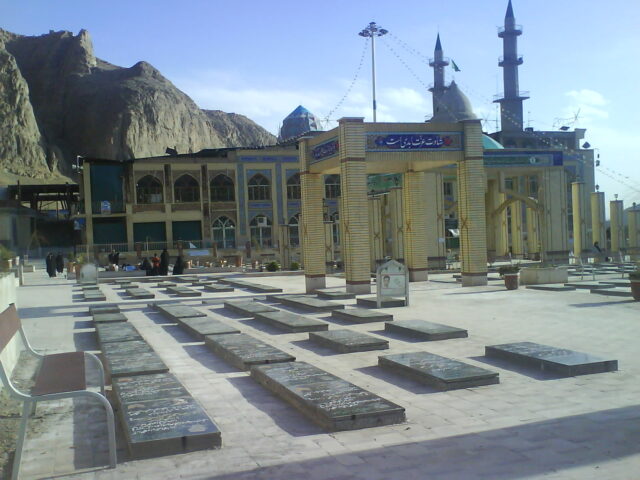Terrorist Attack in Iran: A Preliminary Analysis

Persian Files ISSN 2975-0598 Volume 20 Issue 2
OSINT Team
Two bomb explosions near the tomb of Iranian General Qasem Soleimani have resulted in at least 103 fatalities and numerous injuries in Kerman. The incident occurred on the fourth anniversary of Soleimani’s US drone strike assassination.
While the responsible party remains unidentified, potential culprits include Arab separatists, Islamic State (IS), or other Sunni jihadist groups. The event follows the recent killing of the deputy leader of Iran-backed Palestinian group Hamas, contributing to heightened regional tensions.
Key Findings
- At least 103 people killed and 141 wounded in two bomb explosions near Qasem Soleimani’s tomb in Kerman.
- The explosions occurred on the fourth anniversary of Soleimani’s US drone strike assassination.
- The incident heightens regional tensions, coinciding with the killing of the Hamas deputy leader in Lebanon by an apparent Israeli drone strike.
Terrorist Attack in Iran: Background Information
On the fourth anniversary of General Qasem Soleimani’s assassination, two bomb explosions occurred near his tomb in Kerman, resulting in significant casualties. Soleimani, formerly the commander of the Revolutionary Guards’ Quds Force, played a pivotal role in shaping Iranian policy across the region. The explosions occurred during a procession near the Saheb al-Zaman Mosque, with the exact perpetrators remaining unknown.
Analysis
The geopolitical landscape of the region, marked by historical tensions and power struggles, provides a context for the recent attack. Soleimani’s pivotal role in Iranian foreign operations, supporting allied governments and armed groups, could be a motivating factor for various extremist groups.
Heightened tensions in the aftermath of his assassination and the recent killing of a Hamas leader Saleh al-Arouri contribute to a volatile environment. The lack of immediate claims complicates the attribution of responsibility, necessitating a comprehensive investigation.
Iran’s geopolitical significance in the Middle East stems from its strategic location, enabling Tehran to wield influence over the region, focusing on Iraq, Syria, Palestine, and Lebanon. The rise of the Islamic State since 2014 posed a significant challenge to regional stability, as it established a caliphate and directly threatened nearby states. Although concerted efforts have substantially weakened the group, its persistent threat remains in the region.
The withdrawal of US troops from Afghanistan in August 2021, leading to the resurgence of the Taliban and emboldening the Islamic State, has added a layer of complexity. Proximity to Afghan and Iraqi territories compels Iran to intensify territorial control, aiming to protect the Shi’a community from potential violent attacks.
Currently, two prominent challenges have merged in the Middle East: the enduring Israeli-Palestinian conflict and the menacing threat posed by the Houthi insurgency in the Red Sea mark, directly affecting international shipping. These issues underscore a pervasive regional instability that has broader implications.
Recent terrorist attacks have further showed that Iran, despite its geopolitical significance, is not immune to acts of terrorism and violence. The internal security landscape within Iran appears vulnerable, as evidenced by these attacks, revealing potential gaps in the country’s security apparatus.
Risk Assessment
The incident poses a considerable risk to both the internal stability of Iran and regional peace. The targeting of a significant cultural and religious figure’s tomb indicates a potential escalation in violence and sectarian tensions. Additionally, the attack comes amid broader regional unrest, including the recent Israeli drone strike in Lebanon. The risk of retaliatory actions and further destabilisation in the region is imminent.
Scenarios Analysis
- Terrorist Retaliation: The attack could prompt retaliatory actions from Iran or its allied groups against perceived adversaries, escalating regional tensions.
- Internal Unrest: The incident may fuel internal unrest within Iran, potentially challenging the government’s stability and necessitating increased security measures.
- Diplomatic Repercussions: Depending on the identified perpetrators, diplomatic relations in the region may strain, influencing geopolitical dynamics.
Conclusion/Recommendations
Recognising the evolving regional dynamics, Tehran must adopt a nuanced approach in its foreign policy to address emerging threats. Strengthening internal security measures becomes imperative, aligning with the broader goal of upholding regional stability.
This strategic recalibration not only safeguards Iran’s national interests but also fosters a secure environment for neighbouring states, particularly Iraq and Afghanistan, which remain susceptible to the malevolent influence of the Islamic State. The situation underscores the interconnected nature of regional security concerns, emphasising Iran’s role in suppressing terrorist threats originating from the wider Middle East.
*Last update: 05.00 pm CET
For those with an interest in acquiring comprehensive insights into the dynamics of Iran and its national security, we encourage you to reach out to our team by sending an email to info@specialeurasia.com. We are poised to facilitate an assessment of the opportunity for you to obtain a meticulously crafted and specialised report tailored to your intelligence needs.
